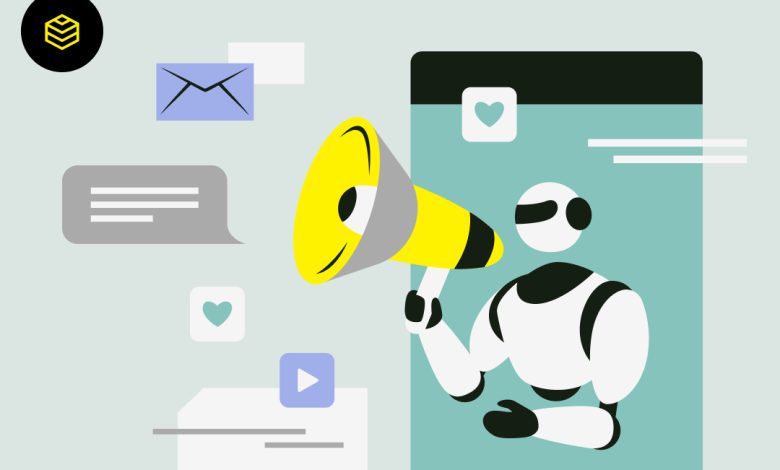
The rapid evolution of social media due to artificial intelligence surpasses all past technological changes. Social media platforms, utilized by billions daily, are undergoing continuous transformation, incorporating features like highly customized feeds, AI-powered customer support, and virtual influencers. This presents new prospects for brands to connect with, involve, and convert their audiences. However, these advancements not only offer growth opportunities but also pose risks that necessitate a prudent and strategic approach. Here are the six significant AI-driven developments shaping social media, their significance, and the considerations brands need to keep in mind while adapting to this evolving landscape.
1. Hyper-personalized content discovery
Recommendation systems powered by artificial intelligence have become integral to social media platforms. Platforms such as TikTok, Instagram, and YouTube utilize machine learning algorithms to present users with content tailored to their preferences, leading to increased user engagement, the discovery of new communities, and the exploration of niche interests that foster user loyalty. This presents a significant opportunity for brands to deliver highly targeted messages to the appropriate audience at the right time, with remarkable precision rather than general approaches.
However, this high level of precision also carries potential drawbacks. Algorithms that overly focus on similarity may confine users within echo chambers, where they are exposed only to content that aligns with their existing beliefs or interests, limiting their exposure to diverse perspectives. Consequently, instead of expanding users’ horizons, personalized recommendations could inadvertently restrict them. Regulatory bodies like the EU are closely monitoring this space, with initiatives such as the Digital Services Act aiming to address opaque recommendation algorithms and promote transparency.
For brands, this evolving landscape underscores the importance of embracing personalization while also prioritizing diversity, transparency, and regulatory compliance.
2. AI-powered community management and customer care
AI-powered community management has advanced strongly. Modern chatbots and social listening tools can handle nearly all routine customer inquiries, providing instant responses, managing complaints, and guiding consumers through simple journeys. Compared to human support, they work 24/7, across time zones, ensuring that communities are constantly engaged. Responsiveness is critical for businesses as 73% of social media users say brands that don’t respond via social will lose their business (SproutSocial, 2023). And a 2025 Harvard Business School study shows AI support tools don’t just resolve issues faster; they also help human agents respond about 20% more quickly, particularly less-experienced staff (Harvard Business School, 2025). The importance of this is so significant as in addition improved service, the service cost center saving potential was predicted to be up to $80 billion by 2026 (Gartner 2022).
But over-reliance comes with pitfalls. Communities thrive on authenticity and empathy. When users realize they are talking to a bot – particularly in sensitive moments – frustration can quickly turn into alienation. Escalation processes are often the weak link: if a routine question suddenly becomes complex, a bot may fail to hand the conversation over to a human agent smoothly.
3. Automated creative production
Generative AI is redefining how social media content is produced. Text-to-image and text-to-video tools can create assets at scale, while natural language models can draft captions, translate copy, and even mimic brand voices. Brands can now localize campaigns across multiple markets almost instantly, test countless variations of creative concepts, and produce more content at a fraction of the cost. For marketers under pressure to do more with less, this is a game-changer.
Adoption is already widespread. In 2025, 69% of social marketers said AI will revolutionize their work and even create new jobs (SQ Magazine, 2025) while 66% of marketers reported improved campaign performance by using AI in influencer marketing (Sprout Social, 2025)
Success on social media however also comes from a unique tone of voice and visual language, hence speed and scale are not the same as resonance. It is important to carefully manage the tradeoff between speed and authenticity. The two are not mutually exclusibe, but need to be actively managed. Automated creative risks producing generic output that dilutes a brand’s distinctiveness. Intellectual property law is another minefield: who owns an AI-generated asset? What happens if it inadvertently replicates copyrighted material?
4. Real-time translation and cross-cultural communication
One of the less visible but equally transformative AI breakthroughs lies in translation. AI-powered real-time translation systems are making social media a truly global platform, removing barriers between countries. Users can now engage with content and communities regardless of language barriers, discovering creators and conversations across borders. Meta’s universal speech translator, No Language Left Behind, already covers over 200 languages and aims to remove language as a barrier to global engagement and is an example of the progress in this area (Meta, 2025).
The opportunity here is profound: niche communities can scale globally, and brands can reach new audiences with minimal friction. But cultural interpretation plays a large role in correct translation. Missteps in tone or context can undermine credibility, and poor-quality machine translation risks alienating rather than engaging.
5. Social commerce and AI-driven conversion
Social platforms are rapidly evolving into full-funnel ecosystems. AI no longer just determines what users see; it increasingly decides what they buy. Personalized recommendations, predictive conversion models, and AI-optimized live shopping events are collapsing the distance between discovery and purchase. In China, this trend is already mainstream: live commerce streams and AI-driven social storefronts are worth billions, and Western platforms are racing to catch up.
This transformation is reshaping brand strategy. 41% of organizations now test proactive engagement, and outbound interactions such as brands commenting on user content drive 1.6× higher engagement compared to passive approaches (Hootsuite, 2025).
But the promise comes with hazards. AI-driven recommendations depend on tracking vast amounts of user data, raising questions about privacy and consent.
6. Synthetic influencers and virtual brand ambassadors
Perhaps the most headline-grabbing advancement is the rise of virtual influencers. AI-generated characters with realistic personalities, backstories, and appearances are already attracting millions of followers. For brands, they offer complete creative control, protection from the unpredictability of human partners, and the ability to maintain consistent messaging around the clock. Virtual ambassadors can also be tailored precisely to brand values, aesthetics, and target demographics, making them attractive long-term assets. The market reflects this momentum: the virtual influencer sector is projected to reach $45 billion by 2030 (Grand View Research, 2025).
Still, authenticity remains the crux of influencer marketing – and synthetic personalities test its limits. If audiences feel deceived, backlash can be swift and unforgiving. There are also unresolved legal and ethical issues around disclosure: should every post make it clear that an influencer is virtual? Who owns the likeness, and what happens if a virtual character too closely resembles a real individual?
Taken together, these six advancements demonstrate that social media is no longer just a communication channel. It is becoming an AI-powered ecosystem where discovery, engagement, commerce, and storytelling merge. For brands, the opportunities are enormous: more precise targeting, faster response times, lower production costs, and measurable conversions. But every opportunity comes with its risks. Echo chambers, loss of authenticity, privacy risks, and legal uncertainty are real challenges that cannot be ignored.
The lesson for marketers is not to fear AI, but to approach it with both ambition and caution. Embrace what it makes possible, but build in safeguards that preserve empathy, creativity, and trust. In doing so, brands will not only harness the power of AI to grow – they will also ensure that growth is sustainable, ethical, and aligned with what consumers truly value.




